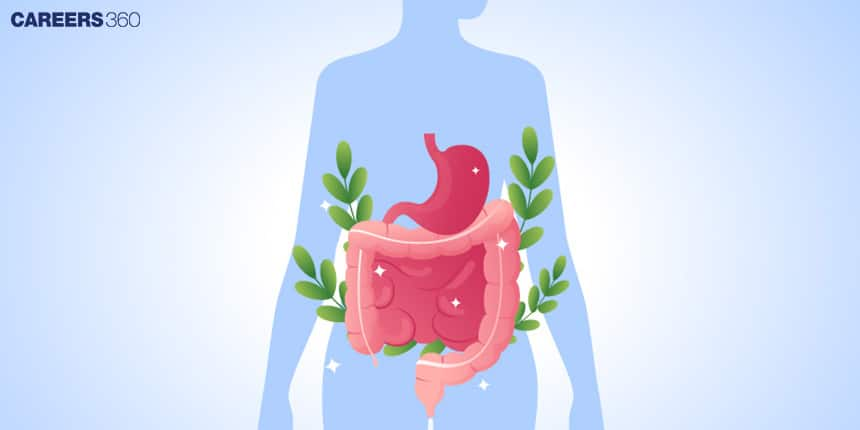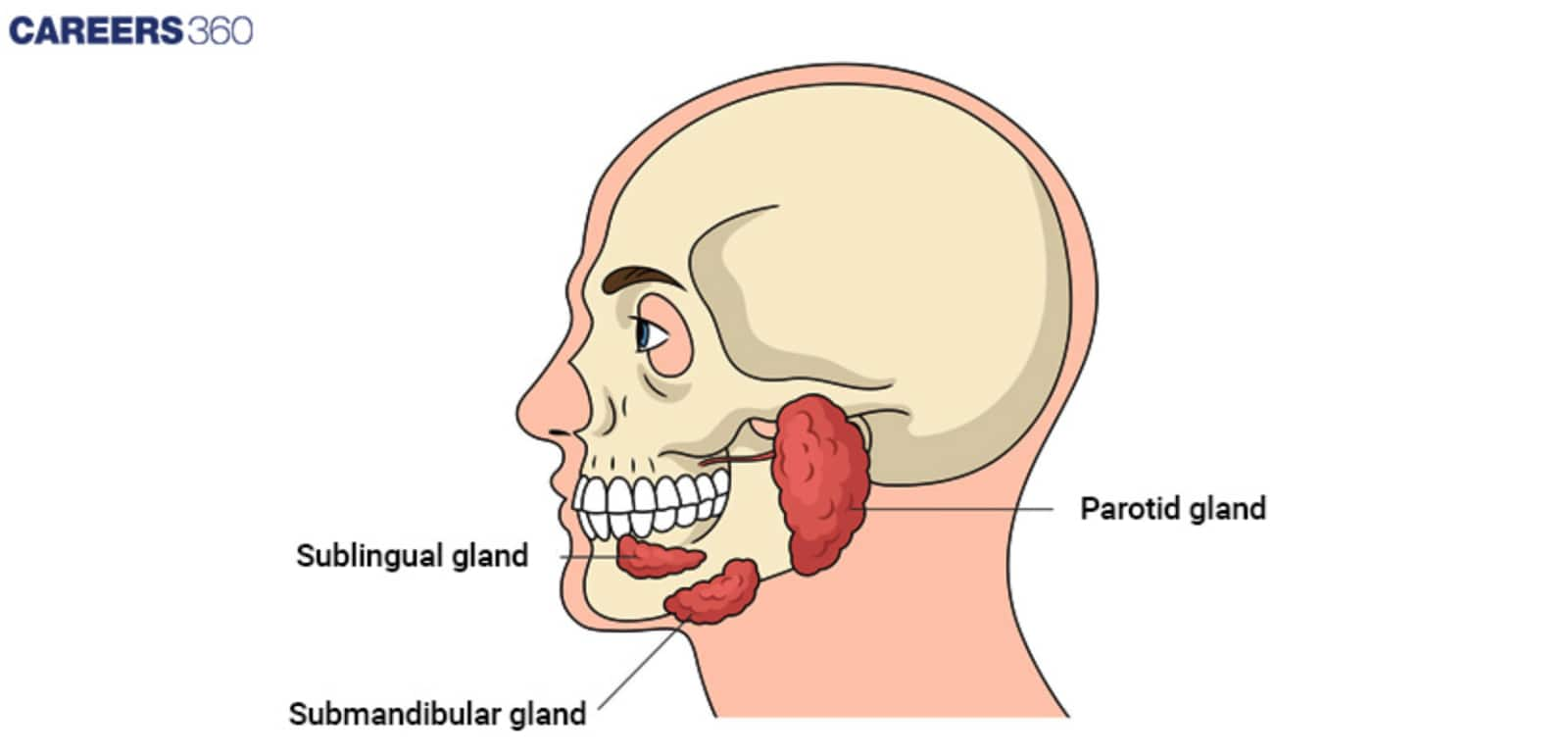Role of Digestive Enzymes in Human Body: Functions
What Are Digestive Enzymes?
Digestive enzymes are enzymes which are very essential in our body since they help to bring about the digestion process through the breaking down of large food molecules into smaller molecules which can be absorbed into the body. These enzymes help in digestion where carbohydrates are broken down into sugar, proteins into amino acids, and fat into fatty acids. It makes sure that the body is provided with the nutrients it needs for metabolism and energy-making. Also, digestion aided by these enzymes enhances the immunity of the body in that it eradicates harmful microbes in the stomach. In conclusion, digestive enzymes are very crucial in preventing diseases and ensuring the good health of an individual.
Don't Miss: Most scoring concepts for NEET | NEET papers with solutions
NEET 2025: Syllabus | PYQs | Crack NEET in 2 months - Study Plan
NEET Important PYQ & Solutions: Physics | Chemistry | Biology | NEET PYQ's (2015-24)

Types Of Digestive Enzymes
Digestive enzymes are a special type of protein used primarily to break down the particles in ingested food to their constituent components. It is possible to distinguish several categories depending on the target macromolecules that are affected by these drugs.
Carbohydrases
Amylase: Split simple and complex carbohydrates; converts starch to maltose and dextrin. Salivary secretion or spit is fabricated in the glands of the mouth and the pancreas.
Maltase: Catalyzes the conversion of maltose to glucose. It is present in small intestines.
Lactase: Cleaves lactose, the sugar found in milk, into two; glucose and galactose. This one is found in the small intestine.
Sucrase: Splits sucrose into glucose and fructose which are present in table sugar. This enzyme is also anchored in the small intestine.
Proteases
Pepsin: Secrete in the stomach, pepsin categorically aids in the digestion of proteins as it splits them into peptides.
Trypsin: Produced in the pancreas and operating in the small intestine, trypsin continues the synthesis and breaks proteins into peptides.
Chymotrypsin: Protein; another pancreatic enzyme that functions in the small intestine where it catalyses the breakdown of proteins into peptides.
Carboxypeptidase: A third pancreatic enzyme that is involved in peptide breakdown cleaves off amino acids from the terminal end of peptides.
Lipases
Pancreatic Lipase: It emulsifies dietary fats into small digestive products of fatty acids and glycerol in the small intestine.
Phospholipase: This enzyme acts on phospholipids to release fatty acids and other lipophilic compounds”
Cholesterol Esterase: Catalyzes the hydrolysis of cholesterol esters into free cholesterol and fatty acids, which play a role in lipid digestion and absorption.
Nucleases
DNase: Catalyses the breaking down of DNA into smaller nucleotide units.
RNase: Identify that it catalyses the hydrolysis of RNA into smaller parts. Concerning their origin, both DNase and RNase are secreted in the pancreas, but they work in the small intestine.
Sources And Production Of Digestive Enzymes
The various sources of the digestive enzymes are:
Salivary glands
The salivary glands situated in the mouth secrete saliva holding amylase which decomposes starch into maltose and dextrin. This starts right from the moment food is subjected to the process of chewing and therefore, saliva is the first component in digestion.
Diagram of salivary glands

Stomach
Gastric juices are produced in the stomach; these include hydrochloric acid and pepsin. Pepsin functions as an enzyme that catalyzes the hydrolysis of proteins into smaller peptides. It also inhibits the action of other enzymes not required in the digestion of proteins, and the acidic pH denatures proteins making it the easiest for pepsin to break.
Pancreas
Digestive enzymes originate from the pancreas, and this organ is, therefore, essential in the delivery of enzymes. It produces a variety of enzymes, including:
Amylase: Carries on the digestion of carbohydrates up to the time they are turned into energy substances.
Trypsin and Chymotrypsin: Protein digestion to peptides. : Digest the proteins into smaller particles called peptides.
Carboxypeptidase: Cleaves peptide bonds to give the constituent amino acids.
Pancreatic Lipase: It emulsifies fats and thereafter reduces them into fatty acids and glycerol.
Nucleases (DNase and RNase): Break down nucleic acids to the monomers form; Specific: degrade nucleic acids into nucleotides.
These enzymes are secreted in the small intestine through the pancreatic duct.
Small intestine
The cellular lining of the small intestine contains enzymes like maltase, lactase and sucrase to further digest carbohydrates to monosaccharides which can be absorbed. The villi of the small intestine also release peptidases that help in the breakdown of peptides into amino acids.
Liver (Bile Salts Aiding Enzyme Activity)
The liver secretes bile which is picked up by the gall bladder and is released into the small intestine. Thus, although bile is not an enzyme, it contains the bile salts that emulsify the fats, making more of their surface available to the pancreatic lipase. It is for this reason that these fats require emulsification and under certain conditions the ability to form an emulsion which is the suspension of the digestive and absorptive machinery for dietary fats.
Role In Different Stages Of Digestion
Digestive enzymes play an important role at different stages of digestion
Oral Cavity
The digestion commences in the mouth, whereby food is mechanically reduced in size by mastication, and moistened with saliva. Saliva also has the enzyme called salivary amylase that initiates the chemical digestion of carbohydrates. Salivary amylase digests starch and converts it into maltose and dextrin, thus, starting the process of the breakdown of carbohydrates.
Stomach
In the stomach, the process of digestion of protein starts. Gastric glands found in the lining of the stomach release gastric juice that is comprised of hydrochloric acid (HCL) and pepsin. HCl also has the effect of breaking proteins, thus making them susceptible to the enzymatic action being carried out. Pepsin derived from inactive pepsinogen through HCl breaks down proteins into small peptides carrying forward the process of digestion that occurs in the mouth.
Small Intestine
A majority of the digestion and most of the absorption occurs in the small intestine. It involves a complex interplay of enzymes and other digestive agents: It involves a complex interplay of enzymes and other digestive agents:
Pancreatic Enzymes: Pancreatic enzymes are then released in the small intestine through the pancreatic duct by the pancreas. These enzymes are for instance; pancreatic amylase acting on carbohydrates, trypsin and chymotrypsin which work on proteins, pancreatic lipase for fats and nucleases for nucleic acids. These enzymes proceed with the degradation of macromolecules into their molecular constituents.
Brush Border Enzymes: The inner lining of the small intestine is made of microvilli which form what is referred to as the brush border. This area contains enzymes like maltase, lactase, and sucrase which finalise the digestion of disaccharides into monosaccharides like glucose, galactose, and fructose. The brush border peptidases on the other hand split peptides into individual amino acids.
Liver
The liver forms bile which is stored in the gallbladder and released in the small intestine as soon as fats are detected. Bile is rich in bile salts that act as emulsifying agents for better dispersion of fats into very small particles. This emulsification enhances the area that the pancreatic lipase has to exercise its function. Fat is then emulsified with the assistance of bile into tiny droplets which can be later on, the pancreatic lipase cleaves these fat droplets into free fatty acids and monoglycerides which can be absorbed through the intestinal epithelial layer.
Frequently Asked Questions (FAQs)
Carbohydrases: Digest carbohydrates (e.g., amylase, maltase, lactase, sucrase).
Proteases: Protein Cleave (e. g. pepsin, trypsin, chymotrypsin, carboxypeptidase).
Lipases: These include; Breaking down fats, for example, pancreatic lipase, phospholipase and cholesterol esterase.
Nucleases: Digest nucleic acids (e.g., nucleases such as DNase and RNase).
Digestive enzymes participate in the chemical division of large food particles into smaller ones that are easy to incorporate into the digestion column.
Deficiency of certain enzymes can cause complications that include malabsorption disorders, digestive symptoms, nutrient deficiencies, and lactose intolerance or pancreatic insufficiency.
Meals containing natural enzymes include; Pineapples containing bromelain, papayas containing papain, mangoes, honey, bananas, avocados and fermented products such as yoghurt and sauerkraut.
Enzyme replacement therapy delivers synthetic or natural enzymes to the patient to enhance nutrient digestion and minimise digestive signs.
Also Read
30 Nov'24 03:25 PM
26 Nov'24 05:38 PM
25 Nov'24 06:43 PM
25 Nov'24 05:45 PM
25 Nov'24 04:48 PM
25 Nov'24 03:52 PM
23 Nov'24 04:30 PM
23 Nov'24 10:03 AM